Disclosure: This article contains affiliate links. We may earn a commission from purchases at no extra cost to you, which helps our travel content.
The call to prayer echoes across terracotta rooftops as the setting sun bathes Fez in liquid gold. I stand transfixed on a rooftop terrace, sketchbook in hand, watching shadows lengthen across the world's largest car-free urban area. C'est un labyrinthe vivant – a living labyrinth of 9,400 alleyways where time seems suspended between the 9th century and today. My obsession with Fez began fifteen years ago during a brief stopover that left me hungry for more. Now, returning in autumn when the summer heat has gentled and the tourist crowds have thinned, I've discovered that Morocco's spiritual capital reveals itself differently to those who linger. This ancient medina demands more than the typical two-day visit; it requires patience, curiosity, and a willingness to become beautifully, hopelessly lost. After seven transformative days navigating its secrets, I'm sharing how couples can experience Fez not as tourists, but as temporary locals in one of humanity's most extraordinary living museums.
Surrendering to the Labyrinth
There's a particular moment every visitor to Fez experiences – that first realization that conventional navigation is futile here. Maps become mere suggestions in a place where streets change names every few blocks, where passages narrow unexpectedly into corridors barely wide enough for shoulders, where doorways lead to unexpected courtyards that bloom with sudden beauty.
On my second morning, I abandoned my meticulously marked map after becoming hopelessly disoriented near Bab Bou Jeloud, the medina's western gate. A wrong turn led me down an unmarked alley where I discovered an elderly craftsman carving cedar in a workshop no bigger than a closet. His weathered hands moved with hypnotic precision, transforming wood into intricate geometric patterns. 'Asseyez-vous,' he gestured without looking up. I sat for an hour, sketching his hands while he worked in companionable silence.
This is the true magic of Fez – not the monuments listed in guidebooks, but the human connections that happen when you surrender to its chaos. Each of the medina's distinct quarters reveals a different personality: the pungent tanneries of Chouara with their honeycomb vats of dye; the intellectual gravity around Al-Qarawiyyin University; the aristocratic elegance of Andalusian Quarter with its hidden palaces.
Rather than fighting the labyrinth, embrace it. Choose a direction each morning and follow your instincts. When you inevitably become lost, smile and remember: being lost in Fez is not a bug—it's the feature.
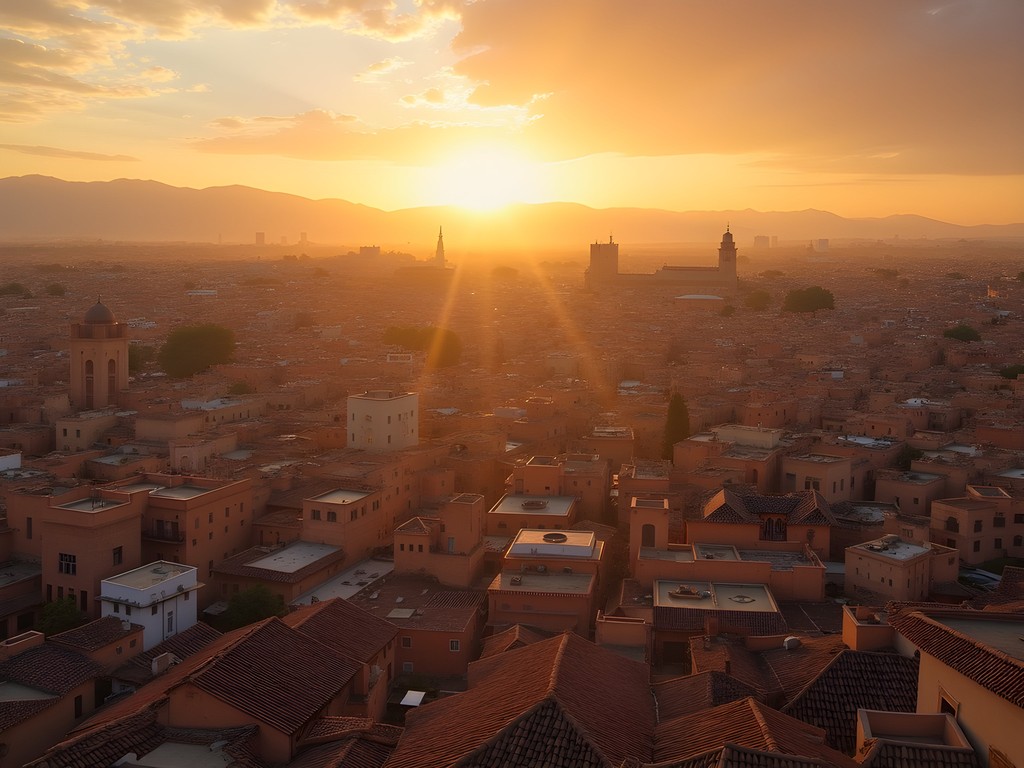
💡 Pro Tips
- Start your first day with a certified guide to understand the medina's layout, then explore independently
- Drop pins on Google Maps at your riad and major landmarks – GPS works surprisingly well despite the narrow streets
- When lost, follow any path downhill to reach one of the main thoroughfares
The Art of Slow Observation
As an artist, I've learned that truly seeing a place requires stillness. In Fez, where every surface tells a story of craftsmanship spanning centuries, this practice becomes essential. Each morning, I would settle into a different café with my travel watercolor kit and observe the rhythm of daily life unfold.
At Café Clock, tucked away near the Bou Inania Madrasa, I spent three hours painting the interplay of light across zellige tilework while couples and families moved through the multi-level space. The owner eventually brought me mint tea without being asked, a silent acknowledgment of my extended presence.
The medina reveals different personalities throughout the day. Early mornings belong to delivery men with donkeys laden with goods, shopkeepers sweeping thresholds, the aroma of fresh bread from communal ovens. By mid-morning, the commercial pulse quickens as stalls open and voices rise in the practiced cadence of negotiation. Afternoons bring the richest light for photography, when sunbeams pierce through latticed rooftops to create dramatic shadows.
For couples seeking intimate moments away from the sensory overload, I discovered hidden gardens and quiet corners. The Jardin Jnan Sbil offers manicured paths and fountains just outside the medina walls. Inside, seek out the rooftop of Fondouk el-Nejjarine, a restored 18th-century caravanserai that now houses a wood crafts museum. For the price of a modest entry ticket, you'll find a terrace with panoramic views where you can sit undisturbed for hours.
Bring a small portable stool for impromptu sketching or people-watching sessions. The ability to sit comfortably anywhere transforms how you experience the city, allowing you to linger in spots tourists typically rush through.
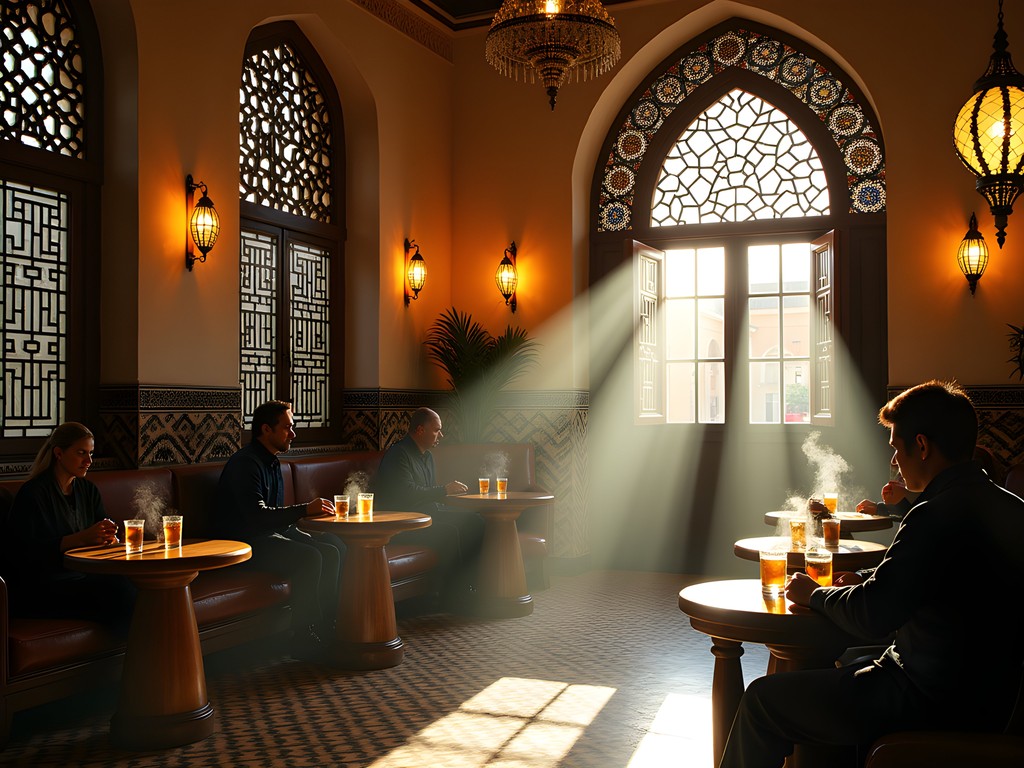
💡 Pro Tips
- Visit major sites like Bou Inania Madrasa early (8-9am) before tour groups arrive
- Return to the same locations at different times of day to witness how light transforms the architecture
- Bring a small sketchbook even if you don't consider yourself an artist – drawing slows your observation
The Language of Hospitality
"Marhaba, La bas?" These simple Arabic greetings became my daily companions, opening doors that remain firmly closed to those who rush through with cameras and guidebooks. While French is widely spoken in Morocco, I found that attempting even broken Darija (Moroccan Arabic) transformed my interactions from transactional to personal.
Nowhere was this more apparent than in my experience with Fatima, whose cooking class I discovered not through websites but through a conversation with my riad owner. Her home, hidden behind an unremarkable blue door in the Ziat neighborhood, opened into a traditional courtyard house where three generations lived together. For six hours, my friend Michel and I learned to prepare b'stilla—the elaborate sweet-savory pastry of pigeon, almonds, and cinnamon—alongside two other couples.
The language barrier dissolved through the universal vocabulary of cooking. Fatima's teenage daughter translated occasionally, but mostly we communicated through gestures, smiles, and the shared satisfaction of creating something beautiful together. When we finally sat to eat our creation on her family rooftop at sunset, the conversation flowed freely despite our linguistic limitations.
Couples seeking authentic connections should consider homestay experiences or cooking classes in family homes rather than tourist-oriented restaurants. The women of Fez are the custodians of culinary traditions that stretch back centuries, and many now supplement their income by sharing these skills.
My most treasured souvenir from Fez isn't the ceramics or textiles that now decorate my Seville apartment, but a handwritten recipe card from Fatima, complete with smudges of saffron and cinnamon. It reminds me that true cultural exchange happens not in the purchasing of goods, but in the sharing of knowledge.
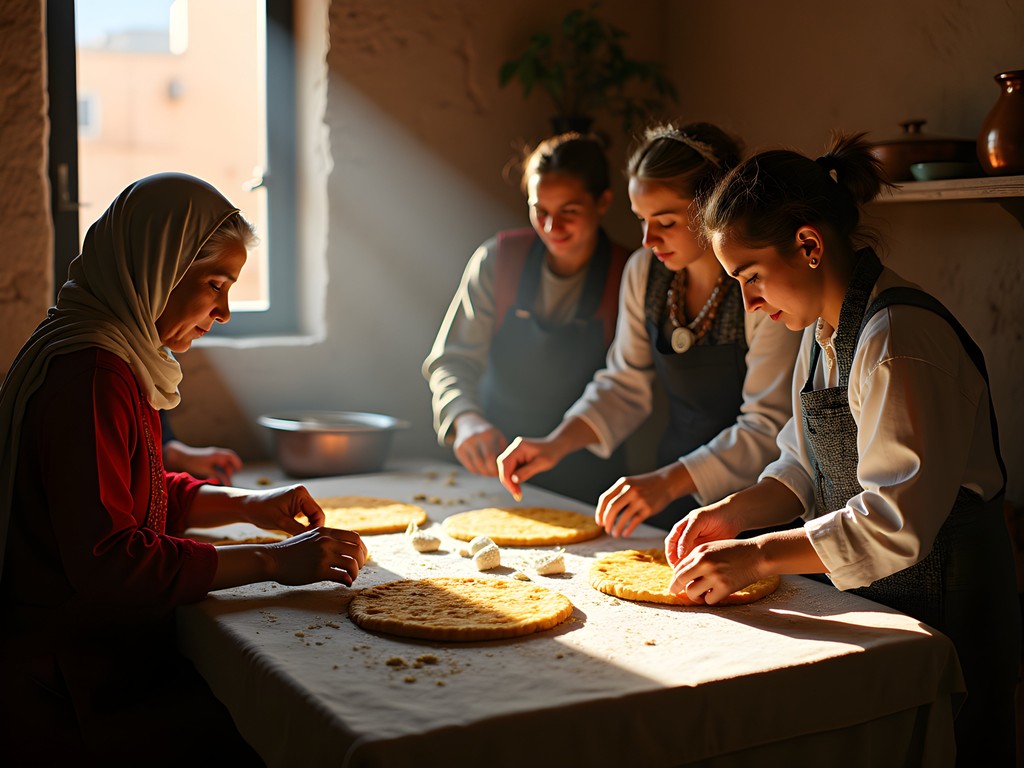
💡 Pro Tips
- Learn basic Arabic greetings and thank-you phrases – even imperfect attempts are deeply appreciated
- Ask your accommodation host for personal recommendations rather than relying solely on guidebooks
- Bring small gifts from your home country to share with those who welcome you into their homes
Artisans of the Medina: Beyond the Tourist Trail
The true soul of Fez resides in the hands of its artisans. While the main tourist arteries offer convenience, the authentic workshops exist in the peripheral quarters where families have practiced the same crafts for generations. My architectural background draws me to these spaces where creation happens according to methods unchanged for centuries.
In the northeastern reaches of the medina, beyond where most tour groups venture, I discovered Mohammed's zellige workshop. Unlike the performative demonstrations offered to tourists, this was a genuine atelier where three generations worked together cutting geometric tiles with alarming precision. Mohammed's father, well into his eighties, could still cut perfect star patterns using nothing but a small hammer and decades of muscle memory.
What struck me most was the mathematical knowledge preserved through oral tradition. These artisans calculate complex geometric patterns without formal education, using systems of measurement passed down through apprenticeship. When I showed Mohammed my sketchbook filled with drawings of his patterns, a three-hour conversation ensued about the sacred geometry underlying Islamic art.
For couples interested in craft traditions, I recommend arranging visits to workshops through local connections rather than organized tours. Your riad owner or guide can often arrange introductions to family workshops specializing in woodcarving, zellige, brass etching, or textile weaving. These visits may require a translator, but the authenticity of experience far outweighs the convenience of tourist-oriented demonstrations.
The most rewarding purchases come from these direct interactions. In my case, a small zellige table commissioned directly from Mohammed's workshop became both a souvenir and a story. I watched the pattern being designed, the individual pieces cut and assembled over several days, returning each afternoon to observe the progress. The resulting piece carries not just artistic value but the memory of connection across cultural boundaries.

💡 Pro Tips
- Ask artisans if you may photograph their work process – many appreciate the documentation of their craft
- Be prepared to pay fair prices for quality craftsmanship – aggressive bargaining dishonors generational expertise
- Commission small pieces directly from workshops if you have multiple days in Fez
Sanctuary in the Urban Wilderness
By day four of our exploration, sensory fatigue had begun to set in. The constant stimulation of the medina—its colors, sounds, aromas, the press of bodies in narrow streets—can overwhelm even the most seasoned travelers. This is when discovering personal sanctuaries becomes essential for couples seeking both connection and respite.
My most treasured discovery was the rooftop of Dar Bensouda, a restored 17th-century palace in the northern medina. Though I wasn't staying there, I found that many riads welcome outside visitors for sunset drinks if you call ahead. From this elevated perch, the chaos of the streets dissolved into a geometric abstraction of rooftops, satellite dishes, and minarets, with the green hills beyond the city providing a serene backdrop.
For more active couples, I recommend an excursion to the Merenid Tombs in the hills overlooking the city. The 30-minute uphill walk from Bab Guissa rewards you with panoramic views and welcome breezes. I spent an afternoon here with my travel binoculars, sketching the city's layout and finally making visual sense of the medina's organization.
Within the medina itself, hammams offer another form of sanctuary. Skip the tourist-oriented spas and seek out neighborhood bathhouses like Hammam Mernissi where locals gather. The ritual of steam, scrubbing, and relaxation dates back centuries and provides both physical and mental restoration. Couples can visit during designated mixed hours, or separate for a few hours to experience traditional men's and women's hammams respectively.
Perhaps most importantly, build deliberate downtime into your Fez itinerary. Some afternoons, I would return to my riad simply to read in the courtyard, processing the morning's experiences before venturing out again for evening exploration. These pauses allowed me to absorb the city more deeply than if I had rushed from site to site.
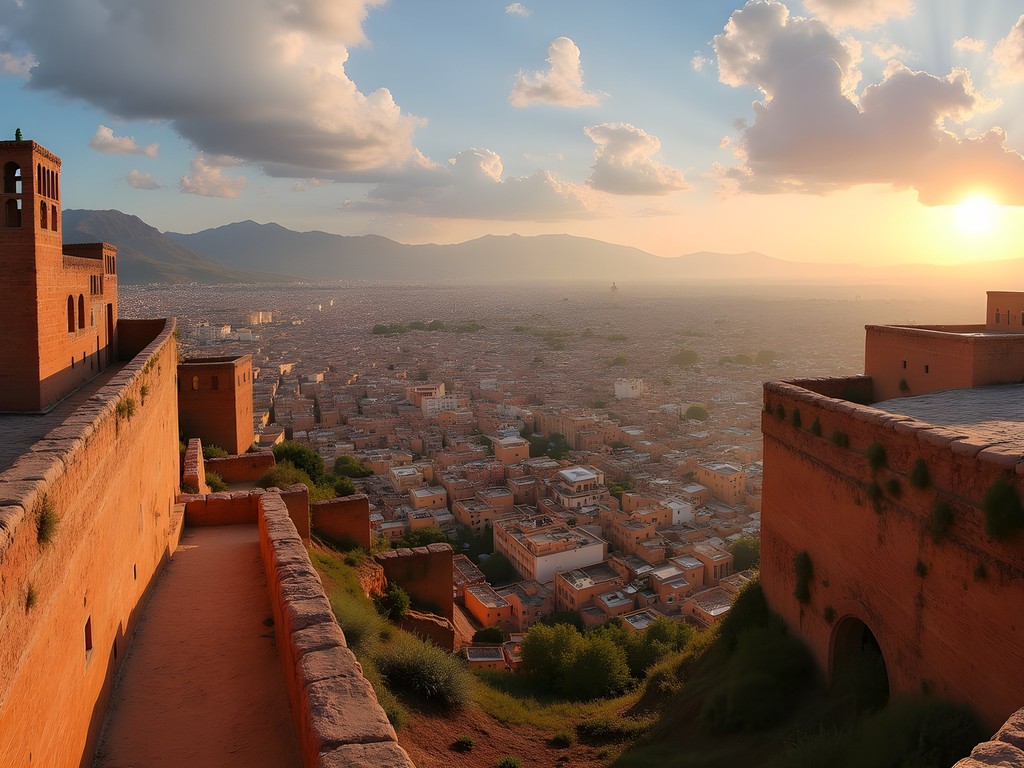
💡 Pro Tips
- Schedule at least one 'nothing day' in your Fez itinerary with no planned activities
- Visit hammams in late afternoon when they're less crowded but still hot from the day's fires
- Bring a quality pair of earplugs for sleeping – the medina rarely falls completely silent
Rhythms of Night: Fez After Dark
As sunset bathes the medina in amber light and the final call to prayer echoes across rooftops, Fez transforms. The commercial energy of day gives way to a more intimate atmosphere, revealing a side of the city many tourists miss entirely.
My evening ritual began with sunset from a different rooftop each night. Riad Rcif offered perhaps the most spectacular panorama, though the small café above Bab Boujloud provided a more dynamic view of human activity. Equipped with my travel tripod, I captured the changing light as day surrendered to night, the medina glowing with warm illumination before settling into the gentle rhythm of evening.
For couples, nighttime offers romantic possibilities absent in the daytime hustle. The Restaurant Nur in Fez's Jewish quarter serves innovative Moroccan cuisine in a candlelit courtyard. Unlike tourist-oriented venues, Chef Najat's menu changes daily based on market availability, and her fusion of traditional flavors with modern techniques reflects Fez's evolving culinary identity.
After dinner, the streets quiet significantly, creating opportunities for unhurried wandering. The main thoroughfares remain well-lit and populated until around 10 PM, with smaller arteries branching into residential quarters where life turns inward to family courtyards. These evening walks revealed architectural details I'd missed in daylight—intricate wooden doors, brass knockers shaped like hands of Fatima, carved cedar balconies projecting over alleyways.
On Thursday night, I stumbled upon a Sufi ritual at Zawiya Moulay Idriss II. The rhythmic chanting and meditative movement offered a glimpse into the spiritual practices that have animated Fez for centuries. While not a performance for tourists, respectful visitors are often welcomed to observe from a distance.
For safety, couples should stick to main paths after dark and arrange for your riad to send someone to meet you if returning late from dinner. The medina is generally safe, but navigation becomes challenging when landmarks disappear into shadow.

💡 Pro Tips
- Ask your riad to arrange dinner reservations and return escorts for late evenings
- Carry a small flashlight for navigating uneven streets after dark
- Thursday evenings often feature Sufi ceremonies at various zawiyas (religious complexes) throughout the medina
Final Thoughts
As I pack my sketchbooks, now filled with impressions of Fez – doorways that frame internal courtyards like living paintings, hands that have inherited centuries of craft knowledge, the geometric precision of zellige patterns that echo the mathematical order beneath apparent chaos – I realize that one week has merely scratched the surface. Fez doesn't surrender its secrets easily. It demands patience, curiosity, and a willingness to become temporarily lost in both place and time. The medina's labyrinth serves as both physical reality and metaphor: to understand Fez is to accept that some paths lead nowhere while others open to unexpected beauty. For couples seeking connection – with each other, with a living medieval city, with traditions that stretch back twelve centuries – there is no more rewarding destination. À bientôt, Fès al-Bali. I will return to lose myself in your embrace again.
✨ Key Takeaways
- Embrace getting lost as part of the experience rather than fighting against the medina's complexity
- Slow down and spend time observing from cafés and rooftops to understand the city's rhythms
- Connect with local artisans through workshops and home visits for authentic cultural exchange
- Balance stimulating exploration with deliberate sanctuary time to process the sensory richness
📋 Practical Information
Best Time to Visit
September to November or March to May
Budget Estimate
$75-150 per day per couple (excluding flights)
Recommended Duration
Minimum 5 days, ideally 7-10 days
Difficulty Level
Moderate

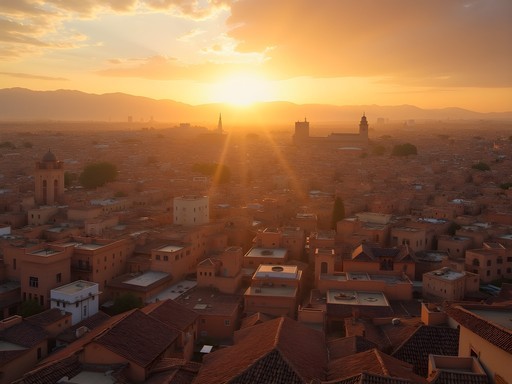
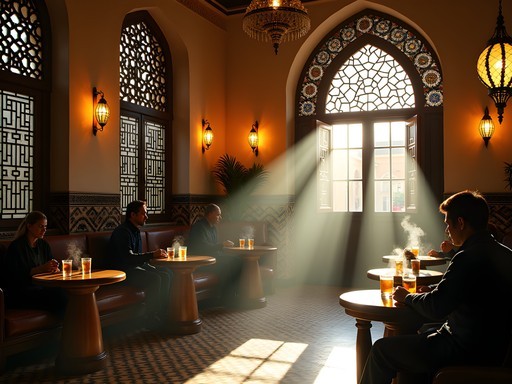
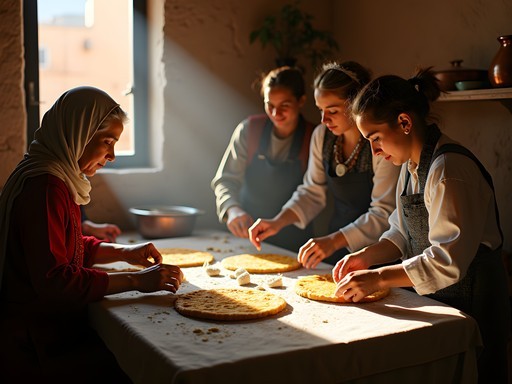

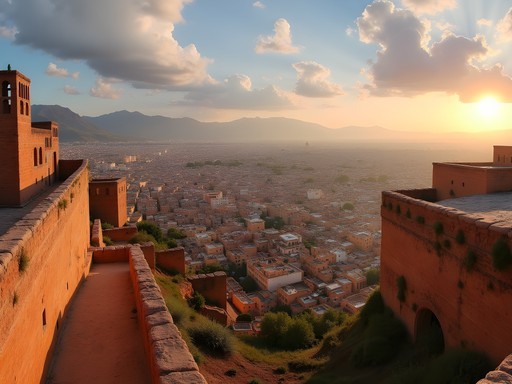
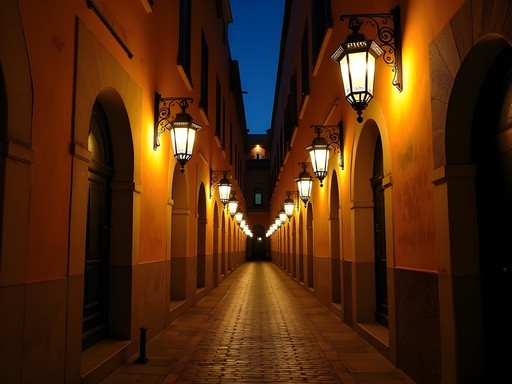



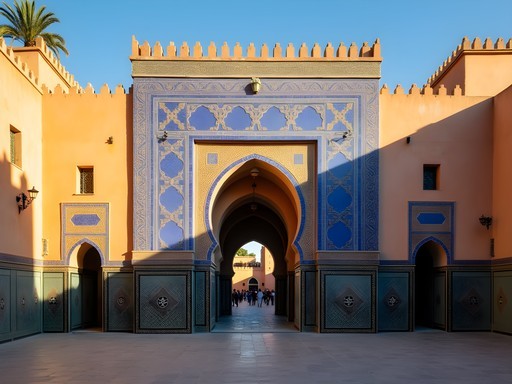
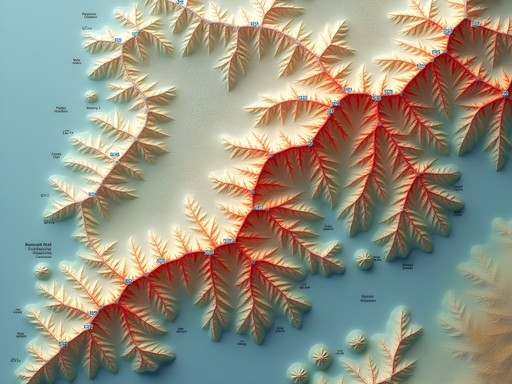





Comments
PhotoAdventures
Your sketches add such a personal touch to this post! Much more meaningful than just snapping photos.
SoloTrekker42
I purposely got lost in Fez's medina last month and it was the highlight of my trip! Found a tiny workshop where a man was making musical instruments and ended up spending hours there. He even invited me for mint tea with his family. Riley's advice about surrendering to the labyrinth is spot on - the magic happens when you stop worrying about where you are and just embrace the experience.
cooltime2861
That sounds incredible! Were you traveling solo? I'm nervous about getting too lost and not finding my way back to my hotel.
SoloTrekker42
Yes, solo trip! Pro tip: I took photos of major landmarks near my riad and saved my hotel location offline in Google Maps. But honestly, locals are super helpful if you're lost - just ask any shop owner and they'll point you in the right direction or even walk you there!
MaroccoFan
Those rooftop views of Fez at sunset are unbeatable! Great post!
Taylor Moreau
Riley, your post transported me back to my own time in Fez last year. Your section on 'The Art of Slow Observation' resonated deeply - it's something many business travelers like myself miss when we rush through destinations. I found that carrying a small pocket notebook helped me slow down and sketch doorways and architectural details, much like you did. The relationships you built with artisans are the real treasure of Fez. Did you visit the tanneries early morning? I found that timing made all the difference in experiencing them without the crowds.
Riley Thomas
Taylor, you're absolutely right about the tanneries in the early morning! The light is magical and you can actually chat with the workers before the tour groups arrive. And yes, sketching really does change how you see a place - it forces you to stop and truly observe.
wanderlust_dreams
I love this whole thread! Getting up early is always worth it when traveling. Adding Fez to my bucket list now!
cooltime2861
This looks amazing! Did you feel safe wandering the medina alone? I'm planning my first trip to Morocco and everyone keeps telling me I need a guide.
Riley Thomas
Thanks for asking! I felt completely safe in the medina, though it can be overwhelming at first. Consider hiring a guide for your first day to get oriented, then venture out solo. Most locals are incredibly helpful if you get turned around!
cooltime2861
That's super helpful, thanks! Did you have any favorite spots that weren't in the guidebooks?
Riley Thomas
Definitely! There's a tiny spice shop near Bab Bou Jeloud run by an elderly man named Hassan who'll make you custom tea blends. Also, look for the hidden courtyard behind the copper market - locals call it 'the secret garden' and it's rarely visited by tourists. Just wander and be open to getting pleasantly lost!
Gregory Boyd
Riley, your approach to Fez is spot on. After backpacking through 40+ countries, I've found that surrendering to getting lost is often the best strategy, especially in places like Fez. On my third visit last year, I finally ditched the maps altogether and just wandered. Found a hidden riad-turned-community art space that wasn't in any guidebook. For first-timers reading this: learn a few Arabic phrases before going - even just 'shukran' (thank you) opens so many doors. And contrary to what many think, I found using my pocket compass more useful than Google Maps, which gets confused in those narrow alleys. The medina has a logic to it once you start recognizing landmarks.
adventureace5020
Three visits to Fez! I'm impressed. Any recommendations for less touristy food spots in the medina?
Gregory Boyd
Look for places where locals are eating! There's a small place near Bab Boujloud (the blue gate) - no English menu, just point and smile. Their harira soup and fresh bread was the best I had. Also, the morning market near R'cif Square has amazing street food before tourists wake up.
adventureace5020
This post brought back so many memories! I got completely lost in the Fez medina last year and ended up having the best day of my trip. A local shopkeeper invited me for mint tea when he saw me looking confused with my map. Ended up spending 2 hours learning about his family's history in the medina. Sometimes getting lost is the best way to travel!
Gregory Boyd
That's exactly what makes Fez special! The unplanned encounters are always the most memorable. Did you make it to any of the tanneries?
adventureace5020
Yes! Found the Chouara Tannery eventually. The smell was intense but seeing those ancient techniques still being used was worth it. Took a sprig of mint from a guy at the entrance - definitely needed it for the smell!
backpacknomad
Just got back from Fez and your post captures it perfectly! One tip for anyone heading there: learn at least a few Arabic phrases. Just saying 'shukran' (thank you) opened so many doors for us. Also, we found the best views of the medina from Borj Nord - worth the uphill walk for sunset. The 'slow observation' approach you mentioned made all the difference for us too - we spent an entire afternoon just sitting in a cafe watching the world go by. Best day of our trip.
wanderlegend
Your sketchbook approach to travel is so refreshing in this age of Instagram-perfect shots! I've been to Fez twice and totally agree that slowing down is the key to really experiencing the medina. Did you visit the Chouara Tannery? The smell is intense but watching that centuries-old leather dyeing process was one of my favorite memories.
wildace
That rooftop sunset description gave me chills. Need to experience that myself!
Venture X
Premium card with 2X miles, $300 travel credit, Priority Pass